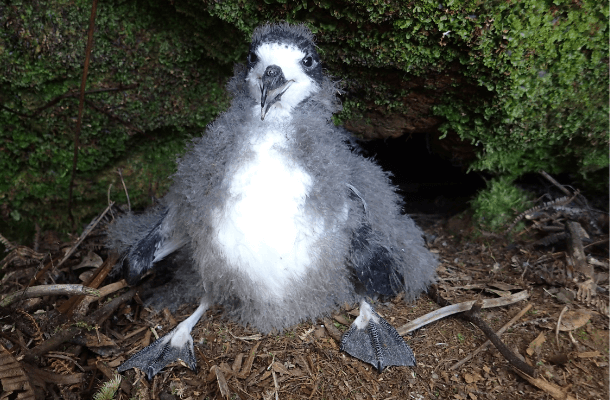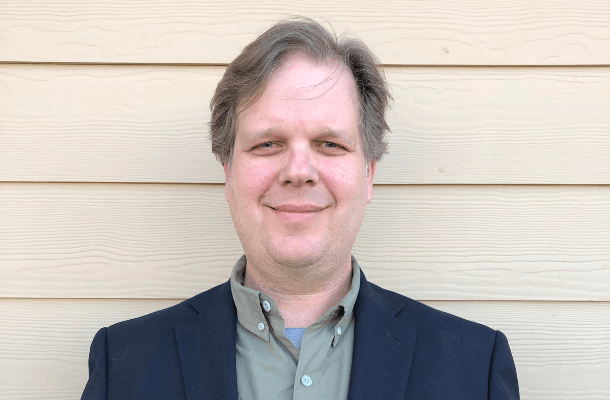Fixing Hawai'i's Power Lines and Street Lights to Save Seabirds and Sea Turtles

Hawaiian Petrel chicks and other seabirds are at risk from power lines and street lights. Current initiatives are trying to fix that, although some important steps remain to be taken. Photo by Andre Raine, Kaua'i Endangered Seabird Recovery Project
Hawaiʻi has a problem that is killing its wildlife. Integral parts of community infrastructure — the lights that brighten the streets and the power lines strung along them — are decimating native species. Endemic nocturnal seabirds such as the Endangered Newell's Shearwater (‘a‘o) and Endangered Hawaiian Petrel (‘ua‘u) are especially at risk. Earlier this year, ABC ramped up its efforts pushing for local companies and government agencies to implement proven solutions to minimize the impact of this infrastructure, and to offset remaining impacts with conservation action.
As these seabirds leave their nests to fly out to sea under the cover of darkness, streetlights disorient them, causing them to fall exhausted to the ground or collide with structures. Power lines strung across their natural flight paths are like nearly invisible drift nets in the night sky. Once on the ground, seabirds are vulnerable to car traffic and predation by invasive species, including cats. Because these seabirds evolved to launch into flight from windy cliff sides, they struggle and fail to launch back in the air from flat terrain. Some simply die of dehydration.
After more than a decade of planning, Kaua‘i is showing a better way forward for these birds in counties across the state, through the new Kaua‘i Seabird Habitat Conservation Plan. Spurred on by legal action brought in 2010 by Earthjustice on behalf of American Bird Conservancy, Hui Ho‘omalu i Ka ‘Āina, Conservation Council for Hawai‘i, and the Center for Biological Diversity, the plan is geared to reduce light pollution and offset remaining impacts with projects like protective fencing installed around nesting colonies.
Kaua‘i's work is not done, and, unfortunately, time is running out. Both Newell's Shearwater and Hawaiian Petrel populations on Kauaʻi are crashing, with the number of Newell's Shearwaters dropping by 94 percent in only 20 years and the Hawaiian Petrel population declining by 78 percent.
One critically important entity absent from the plan is the Kaua‘i Island Utility Cooperative (KIUC), whose power lines are responsible for even more bird deaths than light pollution. After Hurricane ‘Iniki slammed into Kaua‘i in 1992, the utility quickly rebuilt its power lines across seabirds' flight paths, above the treetops where seabirds cannot see them in the dark. The result: 10,000 bird strikes per year, with over 1,000 of those lethal.
A responsible plan from KIUC would include sorely needed upgrades that have languished for years. These include lowering power lines below treetops where possible, installing diverters so birds can see lines, and reconfiguring power line arrays to consolidate lines, so they function less as suspended gauntlets in the sky.
Wildlife now faces another threat on the island of Maui, where officials recently decided to replace 4,800 streetlights with new LED fixtures, ignoring wildlife experts' and community members' warnings that streetlights with a high blue-light content harm seabirds and sea turtles. Maui County's Department of Public Works launched the project without the necessary environmental review and was taken to court.
The solution would be quite simple: Switch to other LED bulbs that filter out blue light. The county would not have had to look far to find that solution: The Big Island (Hawaiʻi ) already uses LED bulbs more protective of its wildlife.
Maui's actions threaten other native species, including Critically Endangered Hawksbill Turtles and Hawaiian Green Turtles. Drawn to the blue-light content of unfiltered LEDs, newly hatched turtles change course, and instead of reaching the protection of the ocean, they may wind up in streets or fodder for cats. One bright, unfiltered street light can wipe out hundreds of turtle hatchlings.
Facing the decline of entire species in Hawaiʻi is deeply unsettling to everyone concerned about saving the islands' natural heritage. With commonsense planning, infrastructure can be upgraded to ensure that these declining species remain part of Hawai‘i for future generations. But the time to act is now.
This piece has been modified for the ABC website. It was originally published in the Honolulu Star Adviser on July 1, 2020, and was written by ABC's Brad Keitt and Earth Justice's David Henkin.
ABC's Seabird Program is generously supported by the National Fish and Wildlife Foundation, the David and Lucile Packard Foundation, and Lynn and Stuart White.
###
Media Contact: Jordan Rutter, Director of Public Relations, 202-888-7472 | jerutter@abcbirds.org | @JERutter
Expert Contact: Brad Keitt, Oceans and Islands Program Director, 831-420-7115 | bkeitt@abcbirds.org
American Bird Conservancy is a nonprofit organization dedicated to conserving birds and their habitats throughout the Americas. With an emphasis on achieving results and working in partnership, we take on the greatest problems facing birds today, innovating and building on rapid advancements in science to halt extinctions, protect habitats, eliminate threats, and build capacity for bird conservation. Find us on abcbirds.org, Facebook, Instagram, and Twitter (@abcbirds).


















































